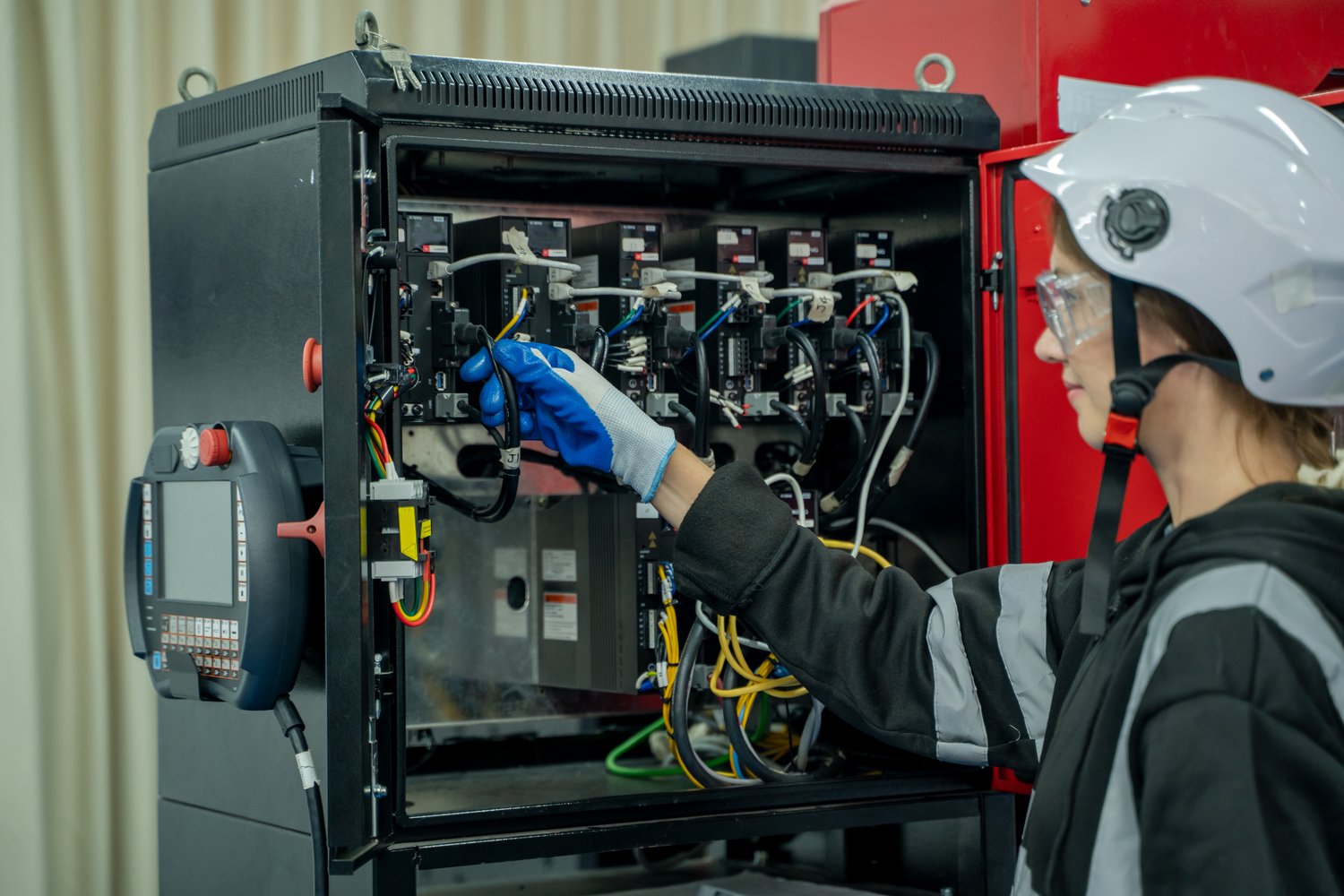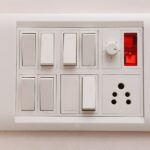Power outages can disrupt more than just the lights—they can affect your business’s operations, compromise safety, and lead to significant financial losses. But with the installation of a backup generator, you can ensure an uninterrupted power supply and keep everything running smoothly. This article delves into the intricacies of installing a backup generator, highlighting vital steps for seamless power outage protection.
- Discover the benefits of backup generators and understand why they are crucial for maintaining continuous power during outages.
- Learn about pre-installation considerations, such as evaluating load requirements, selecting the right generator size, and securing necessary permits.
- Explore a comprehensive step-by-step guide to installing and testing your backup generator for optimal performance.
- Understand the importance of safety measures and regulatory compliance to prevent hazards during installation.
By carefully following this guide, you’ll not only be equipped to protect your business from unexpected power interruptions but also ensure your backup generator remains reliable for years to come.
Understanding Power Outage Protection: Why Install a Backup Generator?
A backup generator serves as an essential investment for any home or business, ensuring a continuous power supply during unexpected outages. Power outages can lead to a significant disruption, affecting everything from comfort and convenience to security and safety.
By having a backup generator, you can have peace of mind knowing that critical systems, such as lighting, heating, and refrigeration, remain operational no matter the situation. This is particularly vital in regions prone to severe weather or where the electrical grid may be unreliable.
Moreover, there are various types of backup generators available, each catering to specific needs. Standby generators are a popular choice for those seeking a seamless transition during outages. These permanent installations are automatically activated when a power outage occurs, making them ideal for both residential and commercial settings.
Meanwhile, portable generators offer flexibility, allowing users to deploy power where needed. This versatility makes them perfect for temporary use or as a supplement to a larger power system.
Understanding these benefits and options can help you make an informed decision, ensuring your generator investment aligns perfectly with your power supply needs.
Pre-Installation Considerations for Backup Generators
Before installing a backup generator, several critical factors need consideration to ensure the setup is both efficient and compliant. First, evaluate your load requirements. Identify which appliances and systems are essential during a power outage to calculate the generator’s needed capacity. Oversizing or undersizing the generator can cause performance issues.
Next, selecting an appropriate location is crucial. Generators should be installed in well-ventilated areas to dissipate exhaust gases effectively and must be easily accessible for maintenance. Additionally, local regulations may dictate specific placement requirements, so it’s essential to review zoning codes and neighborhood rules.
Obtaining the necessary permits is another key step. Installation often requires compliance with local building codes and may involve inspections. Early communication with local authorities will facilitate a smoother installation process.
Finally, choosing the right size and type of generator is imperative. Consider your power needs, the generator’s fuel type, and available features. Consulting with a professional can help tailor the generator to your specific requirements, ensuring efficient and reliable backup power.
How to Install a Backup Generator: Step-by-Step Guide for Power Outage Protection
Installing a backup generator involves several critical steps to ensure it provides reliable power outage protection seamlessly. To begin with, site preparation is essential. Choose a location that is well-ventilated and meets local code requirements, placing the generator on a stable, level surface to prevent movement during operation.
Next, electrical connections are crucial in linking your generator to the home’s electrical system effectively. It’s advisable to hire a licensed electrician to handle the wiring, as this ensures safety and compliance with standards. The installation typically involves connecting the generator to the transfer switch, which plays a pivotal role in switching power automatically during an outage.
Once electrical connections are in place, testing the setup is vital. Begin by running the generator to ensure it starts smoothly and transfers power without hiccups. Listen for any unusual sounds and monitor its performance during the initial tests. This practice not only assures you of its operational readiness but also highlights any initial adjustments needed for optimal functioning.
Following these steps meticulously can lead to a successful generator installation, ensuring peace of mind during unexpected power outages.
Ensuring Safety and Compliance During Installation
Safety and regulatory compliance are imperative aspects of installing a backup generator. Adhering to safety precautions can prevent accidents and equipment damage. Always ensure the generator is installed outdoors to avoid carbon monoxide buildup inside the premises.
Regulatory compliance is equally critical. Make sure you acquire the necessary permits before starting the installation. Consult local authority guidelines to understand any specific zoning or noise control regulations that may apply to your area. Additionally, having a licensed professional carry out the installation ensures adherence to national and local electrical codes.
Feature safety mechanisms such as automatic shutdown systems to prevent overheating or overloading. Regularly inspecting and testing these features maintains their effectiveness.
Overall, by prioritizing safety and meeting regulatory standards, you protect both your investment and the people within the vicinity, ensuring that your backup generator operates smoothly and reliably.
Maintaining Your Backup Generator: Ensuring Long-Term Power Outage Protection
Regular maintenance is crucial to ensure that your backup generator remains reliable during unexpected power outages. By following a structured maintenance routine, you can extend the life of your generator and provide consistent power supply when the grid falters.
Routine Inspection and Testing
Conduct regular visual inspections to check for leaks, corrosion, and physical damage. Ensure connections are tight and free from wear and tear. Testing your generator under load conditions every month can help identify potential issues and maintain peak performance.
Keep Fuel Fresh and Adequately Supplied
Using the right fuel and maintaining an adequate supply is vital. Fuel stabilizers can prevent deterioration, ensuring the generator starts effectively even after long periods of inactivity. Monitor fuel levels and replenish based on usage, especially during extended outages.
Oil and Filter Changes
Regularly changing the oil and filters is essential for smooth operation. Follow the manufacturer’s recommendations regarding the frequency of these changes, typically after every 100-200 hours of use. Fresh oil and filters guarantee effective lubrication and prevent potential engine issues.
Battery Maintenance
A well-maintained battery is key for the generator’s start-up. Clean terminals and connections regularly to prevent build-up and rust. It’s advisable to test battery voltage periodically and replace the battery as needed to avoid unexpected failures.
Professional Servicing
Seek professional servicing annually to ensure all components remain in good condition and any technical adjustments are made. An expert’s eye can identify problems that might be missed during regular checks, ensuring that your backup generator is always ready for action.
By performing these maintenance tasks and staying proactive, you can protect your investment and guarantee a dependable power source when outages occur. Remember, a well-maintained generator not only supports operational efficiency but also safeguards your peace of mind during uncertain situations.
Frequently Asked Questions About Backup Generator Installation
What is the primary benefit of installing a backup generator?
A backup generator ensures an uninterrupted power supply during outages, protecting your home or business from operational disruptions.
How do I determine the right size generator for my needs?
Calculate your total power usage with a load assessment and consult a specialist to match your needs with the appropriate generator size.
Do I need a permit for generator installation?
Yes, most areas require permits for generator installation. Check with your local authorities for specific regulations.
Where is the best location to install a backup generator?
Generators should be installed in a well-ventilated, easily accessible area away from windows, doors, and flammable materials.
What safety measures should I consider during installation?
Ensure compliance with electrical codes, proper grounding, and use only certified professionals for installation to minimize hazards.
How often should my backup generator be serviced?
Routine maintenance is recommended at least once a year, or according to the manufacturer’s guidelines, to ensure reliability.
Can a backup generator power my entire home?
It depends on the generator’s capacity; units are available to power whole homes or essential circuits only.





